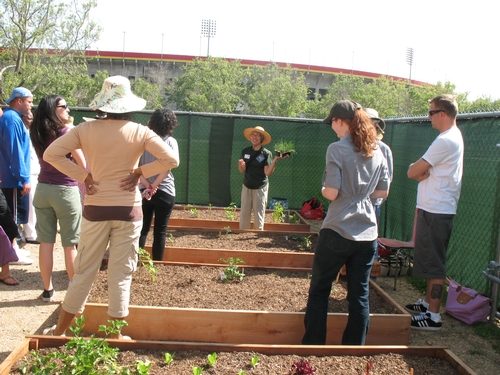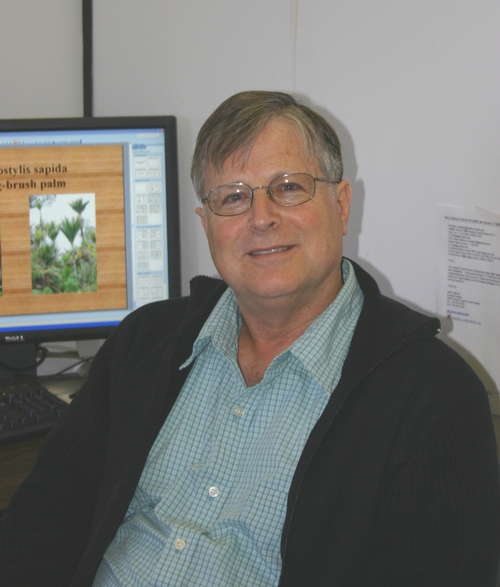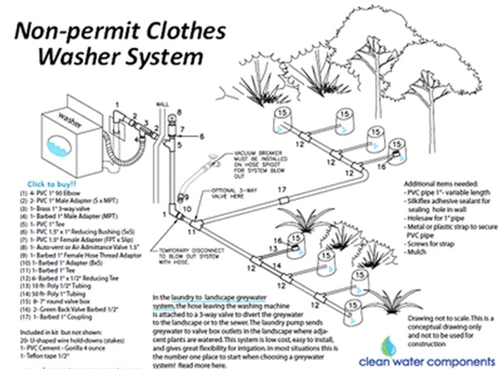
- Author: Dohee Kim

Grow LA helps new gardeners start their own gardens quickly and easily in a container, in the backyard or at a community garden, bringing together local families and neighbors to share their experiences, skills and produce. Participants will be able to turn their new gardening interest into successful gardens "from the ground up," lower their grocery bills and enhance their opportunities to eat healthy, nutritious foods.
UC Cooperative Extension's Master Gardener volunteers will take the beginner gardener through the basics of soil preparation, planting, pest control, irrigation and harvesting. Participants will meet three or four times and engage in hands-on activities. Upon successful completion of the series, participants will become UC-certified Victory Gardeners.
To view the spring schedule or to register for a class, please visit the Grow LA Victory Garden online page.
- Author: Dohee Kim


Hodel and Pittenger are experts who specialize in the selection and management of trees and landscape plants, including irrigation. For more information about their research and education programs, please visit UC Cooperative Extension's Environmental Horticulture page.
- Author: Janet Hartin
- Author: Ben Faber
The use of graywater to irrigate landscape plants is increasing throughout the United States, particularly in California and other arid states. In the United Sates, "graywater" most often refers to wastewater that originates from residential clothes washers, bathtubs, showers and sinks (and it excludes wastewater generated from kitchen sinks, dishwasher and toilets).
In California, graywater is defined as "untreated wastewater that has not been contaminated by any toilet discharge, has not been affected by infectious, contaminated or unhealthy bodily wastes, and does not present a threat from contamination by unhealthful processing, manufacturing or operating wastes. Graywater includes, but is not limited to, wastewater from bathtubs, showers, bathroom washbasins, clothes washing machines, and laundry tubs, but does not include wastewater from kitchen sinks or dishwashers."
Currently, a permit is no longer required for the installation of a single-family or two-family residential graywater irrigation systems from a simple clothes washing graywater system as long as it does not require cutting of the existing plumbing piping.
All other systems require a construction permit prior to erection, retrofitting, construction and installation as stated in the actual code. The full text of standards can be viewed at the California Department of Housing and Community Development (HCD) Division of Codes and Standards website: http://www.hcd.ca.gov/codes. Because these regulations may change at any time, always check with HCD and local enforcement agencies before developing plans for or installing a graywater system. Cities and counties can impose stricter guidelines than the state, so homeowners interested in installing graywater systems should contact their local jurisdiction for specific regulations.
Laundry-to-landscape graywater systems are relatively simple to install and are inexpensive. The hose exiting the clothes washing machine is attached to a valve that separates graywater from water destined for the sewer. The graywater is diverted through a one-inch main irrigation line with half-inch tubing outlets placed throughout the landscape, terminating in a valve box set in what is termed a "mulch basin" which surrounds plants being watered. The washing machine pump distributes water directly to the landscape with no filter. A vacuum break or backflow prevention device may also be needed. Keep in mind that salt-free and boron-free liquid laundry detergents should be used for irrigation the landscape. In addition, chlorine bleach should be avoided.
All laundry-to-landscape systems not requiring a permit are required to:
- be equipped to direct flow back to the sewer (e.g., a three-way valve).
- have valves and direction of graywater flow clearly labeled.
- supply graywater to landscape plantings only on the homeowner's property.
- include an operation and maintenance manual.
- discharge graywater underneath a two-inch cover of mulch, plastic shield or stone covering.
Systems must NOT:
- use water contaminated by diapers and human waste.
- contain hazardous chemicals from oily rags, photolabs, car parts, etc.
- create pooling of standing water or an open tub.
- create water pollution through runoff or deep percolation of graywater into ground and surface waters.
- include a pump (other than a washing machine internal pump).
- connect to any potable water supply.
- affect or alter electrical, plumbing, mechanical or structural components of the home.
Mulch basins receive and distribute graywater to plant root zones and are constructed by removing several inches of soil and replacing it with coarse organic mulch. These basins are established in bed areas or near plants so that the graywater reaches plant root systems. They need to be sized correctly to prevent surface ponding. Sizing depends mainly on soil texture (sandy loam, clay loam, etc.). Graywater percolates quickly through sandy soil, requiring minimal mulch. In slower-percolating clay loam, a larger mulch basin is more durable and longer lasting than small wood chip mulches or shredded fiber.
Applying graywater through a drip irrigation system is not generally recommended. Drip emitters can quickly clog with hair and other graywater products, requiring a filter and regular filter cleaning. A drip irrigation system for this use also requires a backflow preventer (to ensure that potable water is not contaminated) and pump with controllers (to ensure that water flows through emitters). These systems are expensive and require regular maintenance.
Benefits and Risks
Using grawater to irrigate landscape plants can conserve water and electricity and reduce water bills by recycling water otherwise destined for a wastewater treatment plant. Since an estimated 30 to 50 percent of home water use produces graywater, significant savings can be realized. A typical household (2.6 people) produces an average of 90 gallons of graywater each day. While most graywater systems will not supply enough irrigation water to irrigate an entire traditionally landscaped yard, most can supply up to 3/4 of the water required by a drip-irrigated, water-efficient landscape with limited or no turf.
The potential risks should be carefully evaluated before deciding whether to install a graywater recycling system. Graywater varies substantially in quality and potential risks from site to site. Many household cleaning products, shampoos, soaps and detergents contain dyes, bleach, chlorine, sodium, boron and phosphate, which can pose significant human and environmental health concerns. They can also injure and even kill plants at high dosages over a short period or smaller dosages over a longer period.
Impact of Graywater on Human Health
Because of the recent changes regarding graywater reuse under California and other state statutes, research pertaining to the long-term impacts and risks of graywater reuse on human health, plant health, soil chemistry, and ground and surface water quality is very limited. A review of current research-based information follows.
Research examining the microbial constituency of graywater indicates that direct contact with graywater can pose a health risk to humans. Pathogens can enter graywater through food sources in the kitchen, which is why use of graywater generated from kitchen sinks and dishwashers is not recommended. Also, because pathogens can enter graywater through fecal matter, avoid water contaminated by dirty diapers.
Graywater should not be applied directly to edible plant parts or root crops. To be safe, it should be applied only to nonedible ornamental plants. Avoid splashing graywater on neighboring edible plants. Graywater should not be applied through sprinkler systems, since droplets containing harmful microbes can become suspended in the air and breathed.
Impact of Grawater on Soil Chemistry and Water Quality
Limited research exists that addresses the fate of mircroorganisms found in graywater and their impact on indigenous soil microorganisms, soil chemistry and water quality. Infiltration through soil, rock and other materials that serve as filters can significantly diminish the threat of water pollution from graywater use. Unfiltered graywater accumulating in surface water and graywater seepage into neaby wells can diminish water quality.
Impact of Graywater on Plant Health
Because graywater is often rich in nutrients required for plant growth, ornamental plants may benefit from its use. However, numerous studies indicate that graywater may contain significant levels of sodium and other salts that are harmful to plants, particularly powdered laundry detergents. Since ornamental plants vary dramatically in their sensitivity to potentially harmful salts found in graywater, care must be taken when plants are irrigated with graywater. In general, evergreen trees are more salt-sensitive than deciduous trees. Very little is known about the impact of graywater use on annual bedding plants.
Regardless of what graywater system is selected, the following precautions should be always taken:
- Carefully label all valves and pipes associated with your graywater system and prevent backflow.
- Do not store graywater more than 24 hours.
- Wear gloves and do not come into direct contact with graywater.
- Do not let graywater pool or run off or let it come into contact with well water.
- Do not irrigate edibles with groundwater or allow it to splash on neighboring edible plants.
- Do not irrigate turfgrass or ground cover areas with graywater because potentially harmful microorganisms can remain on the surface.
- Do not use graywater that has been contaminated with human waste, infectious disease organisms, grease, paint residue, gasoline, solvents or other chemicals found in household and industrial products.
- Keep the graywater system simple and avoid systems requiring heavy maintenance. Contact a professional with experience designing and installing graywater systems if you lack specific knowledge or time to undertake the project.
For more information, please visit UC Cooperative Extension's Environmental Horticulture page.
- Author: Dohee Kim

Before her official retirement date at the end of June, I chatted briefly with Yvonne to ask her several questions.
Who or what got you into gardening?
My folks purchased our Pasadena property because of a heritage oak. They created pathways throughout the hillside, planted fruit trees and drove annually to the dairy, where Pasadena High School now stands, to load up on fresh manure and lay it down as mulch. My mom grew lots of vegetables, and my dad took care of the fruit trees. I grew up eating seasonally, and whatever was in the garden determined what we had for dinner. Also, my years living in Davis (to work at the university) affected my gardening tasks and skills. For the first time, I experienced real cold and heat, and what they meant in the garden.
You are widely recognized as the person responsible for much of the success of the UC Master Gardener Program in Los Angeles County. How does that feel?
Our wonderfully generous Master Gardener volunteers are the reason that 1.3 million people in Los Angeles know how to grow their own food. I have just been providing the avenue so they can follow through with their nurturing passions. Since 1994, we've trained 1,127 volunteers! From a single tomato plant to providing all the produce for their families, Los Angeles County residents learned how to feed their families, connect with their neighbors and garden sustainably!
What's changed in gardening during your 21 years with UC Cooperative Extension in Los Angeles County?
When we re-started the Master Gardener Program in 1995, only gardeners were interested in growing their own food; now, the general public is eager to join in connecting health and exercise to community beautification, sharing and intergenerational appreciation and cooperation.
Is there a fruit or vegetable that you find satisfying to grow?
Everything, of course! There's always something new and exciting to explore.
Can you describe a memorable day with the Master Gardener Program?
Every single day! I thrive on hearing the excitement of Master Gardeners enthusing about their latest project in their community and school gardens as well as enabling other gardeners to grow and taste their own first pea or broccoli.
Now, what's next for you? What's your goal in your next phase?
My personal website/blog: www.GardeningInLA.net. The site is a resource center of information about our local micro-climates, and it will offer an opportunity for Southern California gardeners to submit events, volunteer opportunities and job opportunities for everyone to benefit.

Members of the inaugural class of the Mountains Recreation and Conservation Authority's Bridge to Park Careers program graduated on April 18, 2015. The ceremony was held at the Vista Hermosa Natural Park in downtown Los Angeles. The young adults were recognized by elected officials, such as California Senate President pro Tempore Kevin de Leon, and community leaders before a crowd of park professionals, community partners, family members and friends.
Bridge to Park Careers is the Mountains Recreation and Conservation Authority's (MRCA) job training program, which prepares urban youth (18-26 years old) to be competitive applicants for jobs with park agencies. In an effort for parks to better reflect and serve urban communities, the participants were referred by local park agencies and community-based organizations.
We are pleased to report that by the end of the training program, all nine of the young graduates were offered employment by the Mountains Recreation and Conservation Authority.
The curriculum used for Bridge to Park Careers merged from multiple separate programs that provided the graduates with certifications (including the UC California Naturalist Certification and the National Association for Interpretation's Interpretive Guide Certification) as well as materials developed just for the program. The curriculum included an overview of the parks movement in Southern California; cultural and natural history of the local mountains; outdoor skills such as orienteering and geography; education and interpretation; customer service and public safety; and leadership development. Sabrina Drill, UC Cooperative Extension's natural resources advisor and associate director of the California Naturalist Program, helped develop this joint training.
"We at the UC California Naturalist Program, are so proud to have been a part of MRCA's Bridge to Park Careers program. From our initial meetings and in-depth training of MRCA's lead instructor to going out and leading the trainees on a tour of the LA River, we loved being a part of this inaugural class," said Drill. "We look forward to continuing to work with the newly certified rangers as well as the future trainees," she added.

The UC California Naturalist Program is designed to introduce Californians to the wonders of our unique ecology and engage the public in study and stewardship of California's natural communities. The program uses a science curriculum, hands-on learning, problem-solving and community service to instill a deep appreciation for the natural communities of the state and to inspire individuals to become stewards of their local resources.
For more information about the UC California Naturalist Program, please click here.

